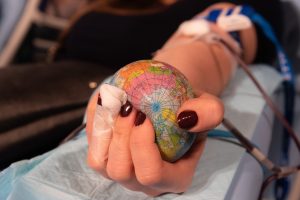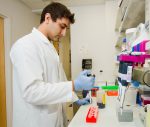Phlebotomy – its earliest forms are traced back to ancient civilizations, such as the Egyptians, Greeks, and Romans.
In these ancient cultures, blood removal from the body was not done for scientific or medical reasons, but it was more a form of removing the so-called evil spirits and illnesses from the body.
In ancient times, draining blood was considered an effective way to cure most ailing bodies and was often performed using a lancet tool.
In the 12th century, the Catholic Church’s head, Pope Alexander III, prohibited his clerics to perform such brutal blood removal ceremonies.
However, as soon as the prohibition for the clerics’ began, the barbers took the job over.
Of course, it would be well expected, having in mind their jobs’ nature.
It was a practice for these new barber-surgeons to perform other health procedures aside from their “specialty”- bloodletting, like wound treating and bone setting.
Remember those red and white barber poles you always asked what their meaning was?
Nowadays, these red-white poles are the only thing left of that blood-draining procedure, with the red symbolizing blood and the white symbolizing the bandages used to stop the bleeding.
The Pilgrims introduced the practice of “bloodletting” to the United States during the 18th century.
Usually, the patient would drain up to four blood pints during this procedure until they eventually feel faint.
Nowadays, this procedure is known to be extremely dangerous for the human body as a rather big amount of blood is removed from the body at once.
Phlebotomy through the history of famous bloodlettings

Even George Washington, the first president of the US, didn’t stay immune to this procedure.
Namely, he suffered fatal consequences after his physician drained nine pints of blood from him.
History has written that Washington died from a throat infection.
However, after learning how he was treated for that illness, we couldn’t do anything but ask ourselves whether his physicians went for the wrong remedy.
When in the 17th century, King Charles II of England has a seizure, his 14 physicians wasted no time treating his condition.
Among the use of other remedies of the time, they ended up doing the blood draining method. In this desperate attempt to save the king’s life, they ended up removing 24 ounces of the king’s blood.
Because of the blood loss, his condition with time weakened until he eventually died.
People continued to practice bloodletting until such fatal consequences didn’t give this blood draining habit a bad reputation, and they began seeing it as a form of charlatanism.
Today’s Phlebotomy
Nowadays, in our modern society, phlebotomy isn’t practiced anymore.
Still, there can be some exceptions as in rare diseases and only if practiced in safe environments, i.e., infirmaries, hospitals, or medical clinics.
Keeping in mind this, not everyone can practice phlebotomy as today they are considered science.
Therefore, one must be formally educated to practice phlebotomy.
One way to receive your formal education is through an accredited phlebotomy school, and the other is through certification in phlebotomy.
Things were a lot different back in the 5th century, B.C.
Let’s take a look at the lives of ancient Greeks – they used to go in the barbershop for everything, whether the service they needed was a haircut or bloodletting.
Pretty simple, ha?
Imagine doing that today, walking to your favorite hairdresser just to ask him of “some” bloodletting.
Sounds pretty primitive, right?
Well, that’s the thing that stops the modern human from phlebotomy, being primitive.
Today even with blood donors, medical staff only takes a small amount just not to put the donor at health risks.
Keeping in mind that phlebotomy’s medical use has come a long way since ancient times, and with today’s training that the phlebotomy technicians get, blood drawing either for medical testing or research has been made rather painless and totally safe for the individual.
This page is also available in Spanish.










